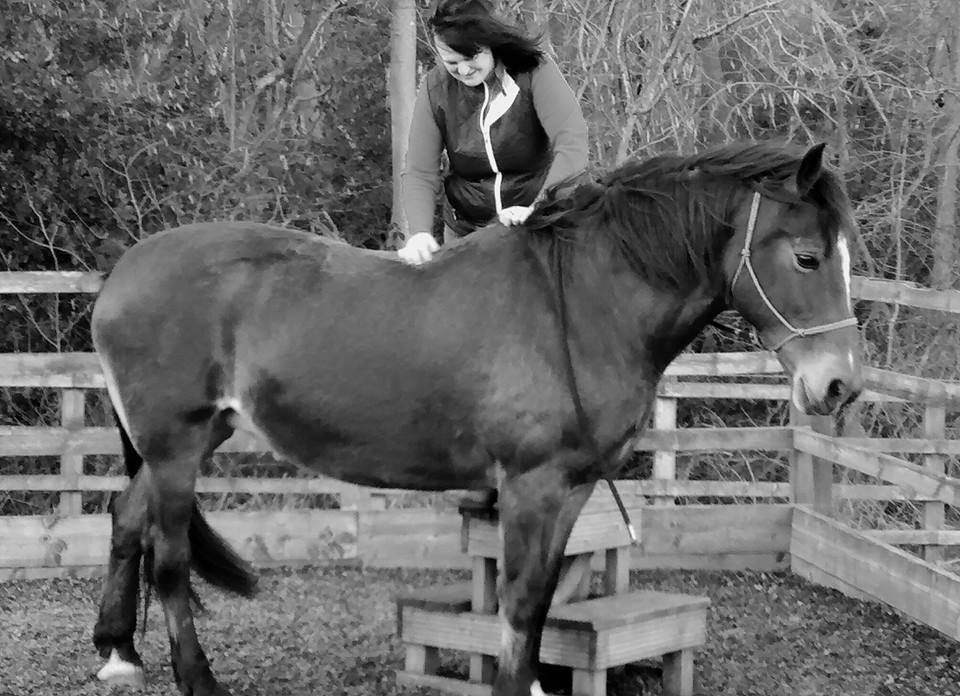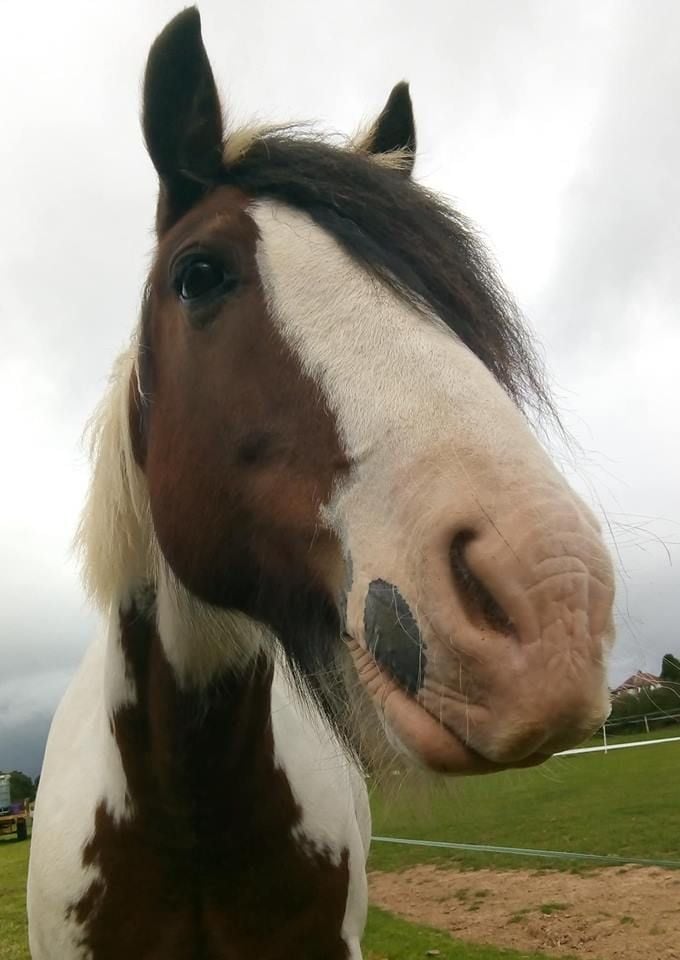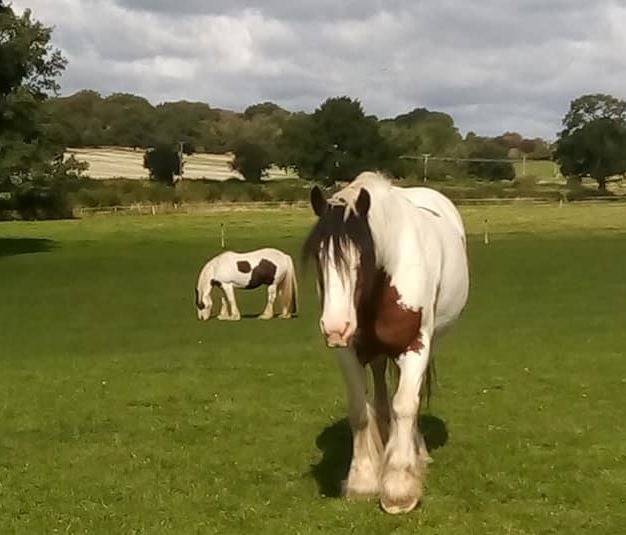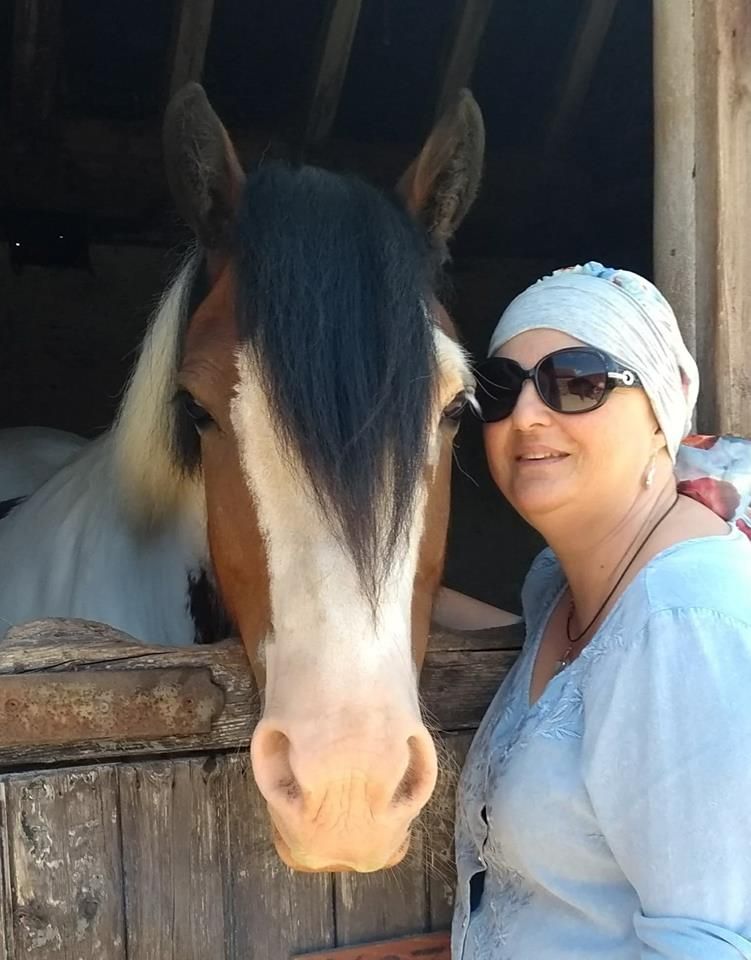I often get asked to solve mounting issues. To cover mounting issues in depth is a book. Here in this interactive article I offer some insights, ideas, practical advice to prompt re-thinking your approach, encourage debate and discussion.

Firstly ensure your horse is healthy, physically comfortable and emotionally balanced. Regularly run your hands over your horse feeling for changes in heat, muscle texture, lumps and bumps and pain response. Watch how your horse moves and stands. Objection to being groomed and tacked up is another warning. Any health concerns should be checked by a vet. Invest in regular good foot balance and dental care. The saddle and bridle should be professionally fitted and regularly checked.
With emotional balance, you can’t convince me horses are not emotional. An emotionally unbalanced horse is at least unhappy, at worst emotionally traumatized and dangerous. A horse that is lacking these basic baselines has a right to say no to being ridden. What is easy to read is the horse saying no, listen! For a horse to travel from an emotional no it has to travel through a lot of maybe to get to yes.
Solving the problem starts with understanding why. Here are some examples:- Fear, anxiety, stress, a memory of pain, confusion, poor training, negative past experiences, nervous rider, lack of trust, poor partnership bond, lack of respectful leadership, no investment in quality time from the human with the horse, the horse sees being ridden as un-enjoyable, boring, drilling, or is ridden badly.…the list goes on…. Resistance is communication, observe and listen carefully. Ask why the horse objects. Horsemanship is equine empathy and compassion to truly see the horse’s view point. Treat each horse as an individual. Take into account their character and personality, life experiences and levels of training etc. Half the picture is the horse the other half is the human. A huge element is the equine and human partnership and quality of the relationship. The training will depend on how best to help that individual partnership. One size does not fit all.
Emotionally unbalanced horses are complex. A few of them allow the rider to mount but then shoot forwards or explode. Other horses refuse or object to be mounted. Equine empathy allows you to read and understand fear and emotion. The intent must shift from mounting. Shift the intent to helping the horse to be balanced emotionally. Go at the pace your horse can cope with. Use a graded approach and retreat technique reinforced with targeted rewards. Allow the horse time to learn and reflect that things are ok. He must learn there is nothing to fear. Horsemanship is about building a strong relationship and confidence. An emotional, tense, anxious horse cannot effectively learn. Teach your horse to be calm and relaxed. Focus on slowing your breathing, lower your energy and be the safe still eye in the storm. Take time to show your horse it can relax before introducing relaxing by the mounting block. Reward the horse for being calm. Take each step slowly reading how your horse feels.
Eliminate discomfort, fear and address emotional balance then you can then start mounting training. Horsemanship ground games using positive reinforcement will enable you to request your horse to move in any direction backwards, sideways, forwards to pick up selected hooves and to place. Master this and you can position your horse easily and happily at the mounting block. This must be done ethically with positive reinforcement and the horse will be highly motivated to present and wait at the mounting block. Positive reinforcement is a very useful tool in ignition of motivation in horsemanship. You can read for FREE my series of published articles on Motivation that appeared in Horsemanship Magazine in the resources section of my website.
Mounting block training I make very easy for horse and human to understand. It is as simple as yes or no. So firstly I teach a horse a noise = yes. Most people know this as clicker training. I don’t use a hand held clicker I use a click noise that I can make = yes. As I use this technique when I ride as well as in groundwork, so I don't want to carry a hand held clicker. How to start teaching your horse a noise = yes is to make a chosen yes noise (click) when you are giving a tasty treat. Do this over a number of days / weeks. Then test out if your horse has learnt the click noise = a reward. Stand minding your own business make the noise and if your horse turns his head expectantly towards you looking for a reward your horse has learnt noise = something good. This is an operant conditioning method you can use the noise to mark the desired behaviour which is then followed with reward. This is one positive reinforcement method, there are many more. The horse must first learn the selected bridge noise equals reward (a tasty treat) before you can use it to mark the sought behaviour. The noise must be prompt and precise to mark exactly the desired behaviour followed by the reward. My own experience of using positive reinforcement in horsemanship is that it encourages speedy learning, motivates horses to learn, makes learning fun and enjoyable. I believe training that focuses on positive interactions leads to lasting positive memories in horses and a happier horse usually leads to a happier human too. Research has shown that positive reinforcement training / clicker training method is highly effective.
So using positive reinforcement in mounting, I call this game the getting warmer or colder game. Here is how to play. What you need is a moveable mounting block ideally a round one so no sharp corners your horse can injure himself on. Place this in a space big enough so your horse can move around it. Stand on the block and don’t get off it. Ask your horse to move into position using your horsemanship ground games to move his feet. If he moves where you want click and treat and let him enjoy the praise and reward. If he moves away use your spare bit of long rope as if was an annoying fly, gently tickle it doesn’t matter which part you tickle. (This is a negative reinforcement, just like the annoying seat belt bleeper in your car to annoy you enough so you choose to do the right thing.) You are doing it to say you are getting colder. Many people try to correct the horse moving away and then can’t reach the quarters that have swung out. Using my technique it matters not which part you tickle the being like an annoying fly is what matters. As soon as the horse moves towards the desired position he is getting warmer so stop tickling, mark, praise and reward your horse. I want the horse to think how do I train the human to quit tickling and annoying me? How do I get the reward?….I know I stand here. Make it very pleasurable to stand by the mounting block, use the mounting block to access your horse’s sweet spots, massage and engage in partnership pair bond scratching. Once your horse has learnt to stand in the correct position, and knows you will reward, you can then move to the next step, pick up your reins as if you are going to mount. Often at this point the horse will move. Repeat the getting colder part of the game, tickle and annoy until the horse moves back into position then stop tickling and reward the horse. Once you can achieve gathering the reins go to put your foot into the stirrup. Again the horse may choose to move, if so return to annoying tickling and when the horse offers to stand correctly reward generously. Then pick up your reins, and place foot in the stirrup. Once your horse stands for this mount, and positively reinforce by a bridge noise and a treat. The treat is only earned by allowing him to be mounted. Then stroll around for a short while and dismount as the lesson for the day was mounting your horse needs time to reflect and absorb the learning. If you want a horse that is highly motivated in regard to mounting, be prepared to have industrial patience, time to repeat this training regularly and use highly perceived rewards. I invest in this training for my own horses, as you can extend the game to include coming over to collect you to mount.
Some final thoughts: Your horse has the right to say no to being ridden. Is your riding permissive? What is in it for the horse when we ride? Does the horse think being ridden is meaningful, enjoyable, rewarding and fun? What type of partner are you? Calm, confident, positive, thoughtful and communicating sensitively? Get this right and your horse will look forward to being ridden.
If you want help with mounting issues or any aspect of horsemanship please get in touch.



